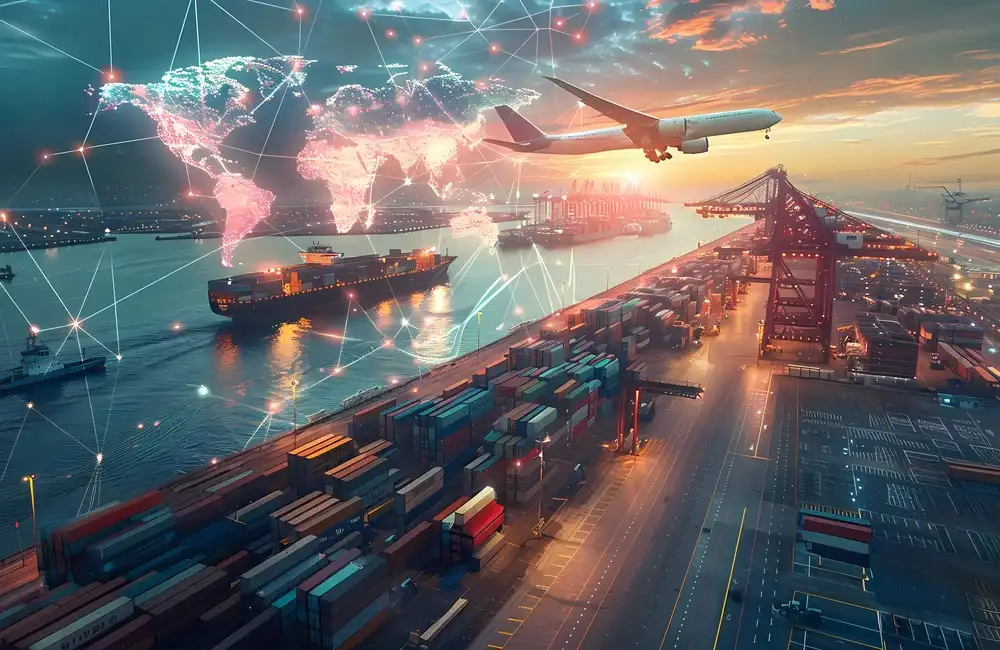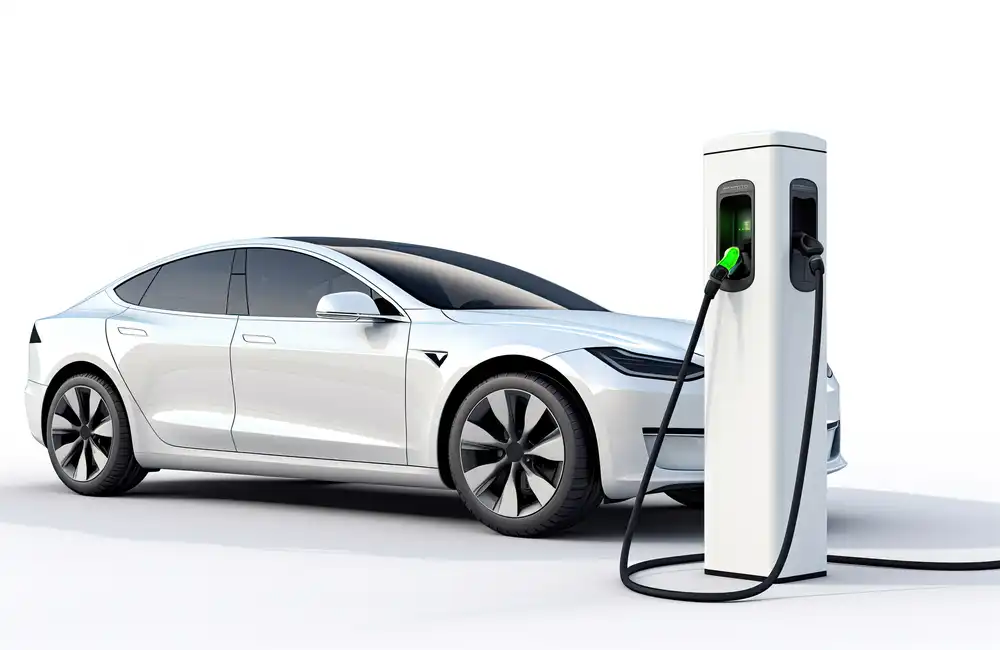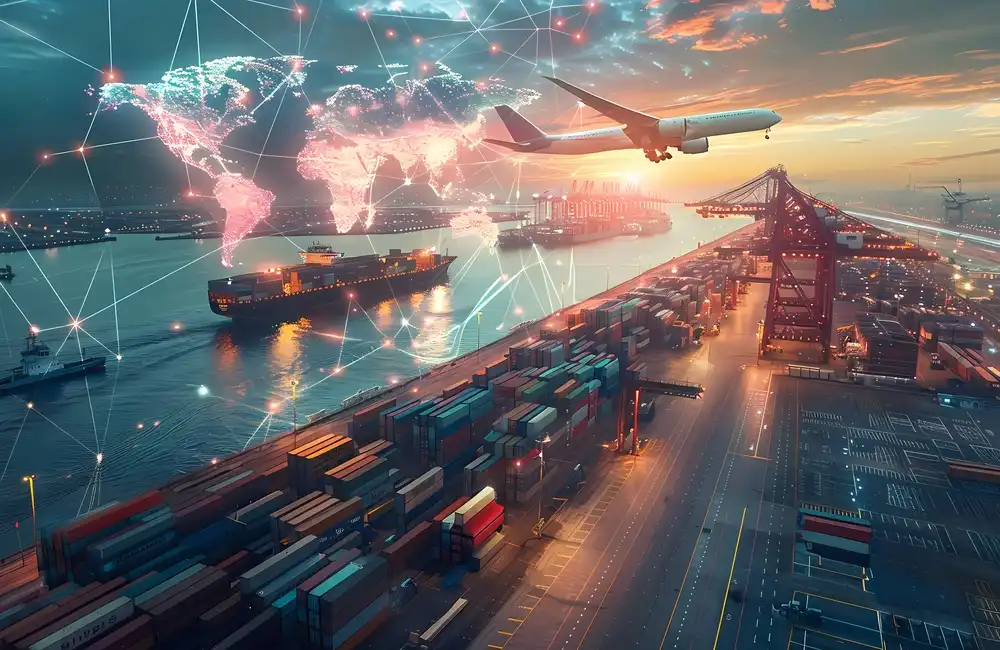You could almost consider the commodity and energy sectors the antithesis of the technology sector. Again, value sectors overgrowth, cyclical companies over higher quality earning streams, and old economy over new economy.
However, to boil it down, without oceans of raw materials to engineer the machines and run them, we wouldn’t have the net, artificial intelligence, or even mobile phones. All the key strategic sectors of the economy right now require huge amounts of materials, not just AI but also renewable energy. Both need large investments in power generation and transmission capacity. That means the future of these sectors could be closely linked. Here are some of those crucial questions investors need to be thinking about when it comes to the commodity markets in the current context of these critical trends, and we ask, which parts of the commodity complex will remain an entrenched part of the economy of the future?
- Has copper become a secular, rather than cyclical commodity?
The drop observed in copper since May could show its classic role as a leading indicator for global growth still matters for the price more than the unflattering economic outlook during this time. The Chinese economy, in particular, has been weak, and China has long been the metal’s most important driver of industrial demand. Yes, the price had a pop on the recent stimulus package in China, but since then, the market has priced the fact that the stimulus was not focused on building and real estate per se, and hasn’t changed the picture much as far as Chinese demand for commodities is concerned. Growth is expected to stay weak and construction a drag, while China’s construction sector PMI has been above 50 all this year, it has fallen markedly as the year’s gone on. What’s more, we find it curious how small the drop in prices has been. Copper, whatever the outlook for China, has since 2021 found support at levels well above its pre-pandemic high.
- Are key commodities facing a supply crunch from underinvestment?
While demand is important, supply has to be looked at as well, and new copper supply has been constrained in recent years. There have been specific issues in several of the important jurisdictions. In Chile, for instance, state-owned behemoth Codelco is experiencing diminished production from mine upgrades that are lagging behind schedule and operations problems. Likewise, in Peru, while social unrest has receded since 2023, tensions over investment and pushback against mining ventures remain.
At a macro level, investment in new copper mines has been falling short, and globally, project pipelines have yet to catch up. Long timescales to develop mines in some cases, greater than a decade, owing to permitting, environmental issues, and financing issues, only compound this problem. The supply-side squeeze is particularly potent against the backdrop of surging demand for copper in renewable energy technologies, electric vehicles, and infrastructure upgrades. It also expects copper demand to reach 39 metric tonnes a year by 2040, according to the Bloomberg New Energy Foundation (BloombergNEF), but only projects supply under the “base case” to rise to 25 metric tonnes.
The capital intensity of new projects is arguably the number one challenge facing the mining industry as a whole. The price of developing new mines has increased dramatically in the past 10 years, according to analyses from Morgan Stanley and RBC. Several factors of the increase are due to the depletion of high-quality deposits, more restrictive environmental policies, and the requirement for increasingly sophisticated technologies to extract resources from difficult geologies.
For example, although there is still plenty of copper underground, the copper ore grade has been falling worldwide, forcing mining firms to process higher volumes to generate the same amount of metal. This will not only inflate operational costs but also escalate the environmental and logistical challenges for mining projects. In a similar vein, lithium extraction is often contingent on hard rock or brine operations that rely on high capitalization upfront to maintain sustainability and efficiency.
There is room for technical progress to be made here, too. The BlackRock World Mining (BRWM) fund has a holding in an unlisted firm, JettiResources, which has developed a new leaching technique for extracting copper from low-grade deposits and from waste materials. Jetti is already in advanced talks with a global mining company to roll out the tech, and BRWM’s managers believe that if that rollout goes ahead next year, then an IPO should follow. They say the position is currently valued at a 150% premium to the price they paid for their shares.
Over all, even though the demand for critical minerals is rising, investment in mining has lagged. BlackRock’s analysis of capex trends notes that large mining companies have greatly reduced expansionary spending across their assets since the climax of the commodity supercycle in the mid-2010s. Many firms have focused on returning cash to shareholders via dividends and share buybacks rather than reinvesting profits into new initiatives.
According to S&P Global Market Intelligence data, global exploration budgets for nonferrous metals fell 11% in 2023 from the prior year. This is especially alarming in the case of materials such as lithium and nickel, which have significantly more potential for exponential demand increase in EV batteries and renewable energy systems. The restricted pipeline of new projects indicates that supply will have difficulty keeping pace with demand this decade.
For copper, S&P Global sees a potential supply shortfall of as much as 9.9 million metric tonnes by 2035 absent a ramp-up of spending on new mines and recyclers. Meanwhile, the World Bank estimates that lithium supply needs to ramp up by almost 500% by 2050 to hit climate targets. Yet, new capacity is slow to develop as investments in Proctored searches suggest slow current investment trends. Regulatory and community opposition and environmental scrutiny impose burdens on lithium extraction projects that drive delays and cost overruns.
Nickel is also an important mineral for EV batteries, especially in high-energy-density chemistries. Despite strong growth in demand, nickel supply is bottlenecked by where the majority of production is located, such as Indonesia and the Philippines. Furthermore, nickel processing for battery applications is very capital-intensive, and a number of the operating design facilities are geared towards producing stainless-steel-grade nickel instead of battery-grade material. China is a major source of supply and processing for Nickel and Lithium.
That opens the door to investment opportunities, however, as Indonesia is investing significantly in domestic production and refining of nickel. Indonesia wishes to use it as leverage for trade negotiations with the USA, securing Indonesian nickel at no risk of incurring the extra taxes due on any EV-associated products coming from China. We see the supply situation as bullish for the commodity producers in the medium term. What does seem certain is that the lead times being factored in by miners and builders of commodity supply are well beyond the typical (notoriously short-term) investment horizon of listed equity investors. The fact that and the a need to juggle geopolitics and trade barriers means that there is indeed a strong case for active management versus a more passive approach.
- Are the world’s oil fields in danger of becoming stranded assets?
Numerous projections were made throughout the pandemic that sound somewhat over-ambitious a few years later. One of them may be BP’s decision, in 2020, to transform itself from an international oil company into an integrated energy company. Of course, the company has since tempered aspirations, cutting exposure to renewables and slowing the planned decline of oil and gas production. Oil demand has been surprisingly sticky, especially amid global decarbonisation efforts. More than 140 countries representing 90% of global GDP have committed to decarbonising, and Bloomberg NEF data indicates renewable energy investment exceeded $1trn (+60%) in 2022, outpacing upstream oil and gas investment. But all of that was still behind what amounted to record global oil consumption in 2023 of about 102m barrels per day, spurred mostly by Asian customers. Nations such as China and India are driving this increase, driven by middle-class consumption, industrialisation, and urbanisation. Take India, which alone is expected to make up 25% of the global energy demand growth until 2040, and oil will still be vital to meet the country's demand.
OPEC and the International Energy Agency (IEA) both stress that oil demand in the medium term will be led by developing countries. This increase is expected to counteract falling demand in advanced economies, where policies aimed at decarbonising are taking shape and EVs are being embraced. According to BP’s own Energy Outlook 2023, disadvantaged and even ambitious net-zero scenarios need considerable oil consumption through 2050 for hard-to-electrify applications and in slow-to-transition nations.
In addition to demand from the emerging world, oil’s importance for particular sectors will probably bolster its relevance for decades to come. Petrochemicals, which comprise about 12% of global oil demand, are critical to the manufacture of plastics, fertilisers, and other building blocks of industrial society. The point you are making is that in this regard, what is interesting is that the growth in the production of energy in the USA has been driven in recent years by the production of lighter products, natural gas and light crude, and it is these products that are used to for the petrochemicals. In case you were wondering, USA crude oil production surpassed pre-pandemic levels this year and hit all-time highs in August, well before Trump was elected, and natural gas production has long since blown past its pre-pandemic levels.
- Is natural gas a bridge fuel?
One of the biggest reasons carbon emissions are falling globally has been a shift away from coal or oil and toward natural gas. When using natural gas for electricity generation it emits only about 50% of the CO₂ compared to coal and about 20% lower CO₂ than oil. This has had a particularly strong effect in the USA, where greater use of natural gas in power generation led to total emissions peaking in 2007. And natural gas produces far fewer air pollutants, such as sulphur dioxide and particulate matter.
Natural gas might even serve as a bridge fuel in cars. LNG-fuelled trucks in China are quickly gaining market share, accounting for 21% of heavy-duty trucks in the first five months of 2024, with sales over 2 times that in a year. Natural gas trucks not only produce cleaner emissions than diesel, with lower levels of sulphur and particulates, but also significantly lower running costs than diesel trucks.
The USA is the world’s largest producer of natural gas, and has been able to ship natural gas by sea to Europe as it disentangles itself from Russian gas. Russia and Iran are the second and third largest producers, with Canada and Algeria also in that group. North America should more than double LNG export capacity from 2023-2027 with first terminals opening in Mexico and Canada, and the USA ramping up its terminals (EIA) It is worth noting that the USA’s natural gas use for electricity generation has declined in recent years so output is going to the rest of the world, notably Europe. (ESG analysts would give the black mark to the USA here, but we might wonder whether this makes sense.) Estimates by BlackRock and Thunder Said Energy set the stage for this decline in gas-fired power to persist, though it will remain the largest single source of power still in the US for long into the 2030s. They were predicting solar, wind, and nuclear to deliver the extra supply needed to meet the steep increase in expected demand from the internet, artificial intelligence, and blockchain.
Natural gas has quite a bit of longevity in the global energy mix; it seems, one of the trends to watch is the shifting of demand away from the USA, and possibly away in time from Europe. There may be investment opportunities in the producers, though companies like Shell tend to be diversified and not pure plays. And it should lead to work in pipelines, shipping, and ports, all of which should be built to more demanding environmental standards, at least in the developed world. You could argue that natural gas’s relatively low emissions impact means it might belong in an investment portfolio focused on energy transition. Note that SDCL Energy Efficiency Income (SEIT) has ~12% in Combined Heat and Power (CHP) systems fuelled by natural gas. They utilize the extra heat generated during the production of electrical power to deliver heating concurrently, with unrivaled energy efficiency. A further 13% of SEIT is in CHP systems that use waste gas or renewable sources, but these are not always realistic for other investments.
- Should we be concerned about food inflation?
Given global challenges, food inflation has shown up in the most unexpected ways. According to analysts, food inflation remains one of the highest in the past 40 years. Yet, when you consider the sources of most of this inflation, it’s clear that for now, we are not yet seeing any direct price spikes driven by a permanent shortage of vital foodstuffs. There is, however, an increasing reliance on crops as inputs for biofuels, such as corn being diverted to produce ethanol, which is a factor affecting food prices. Severe weather events resulting from climate change are disrupting production in many parts of the world. In Africa, for example, the impact of rising temperatures on agricultural yields will increasingly be a risk for farmers.



















